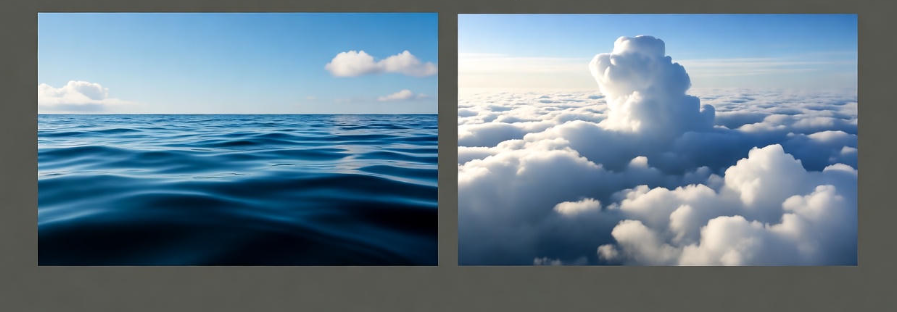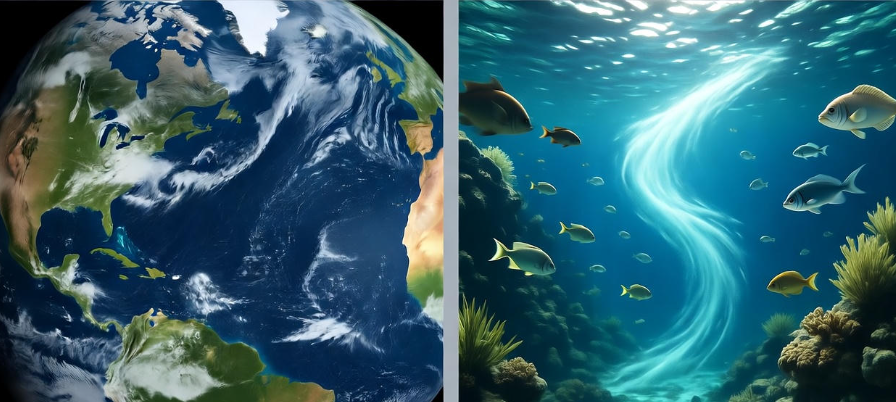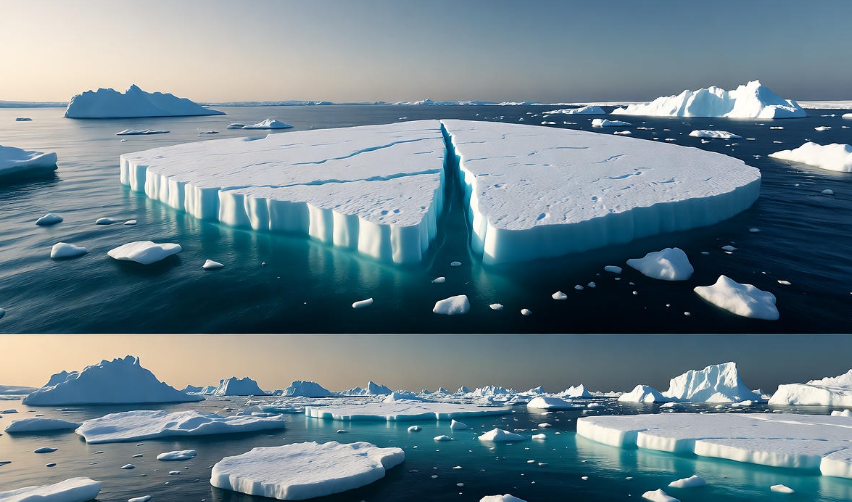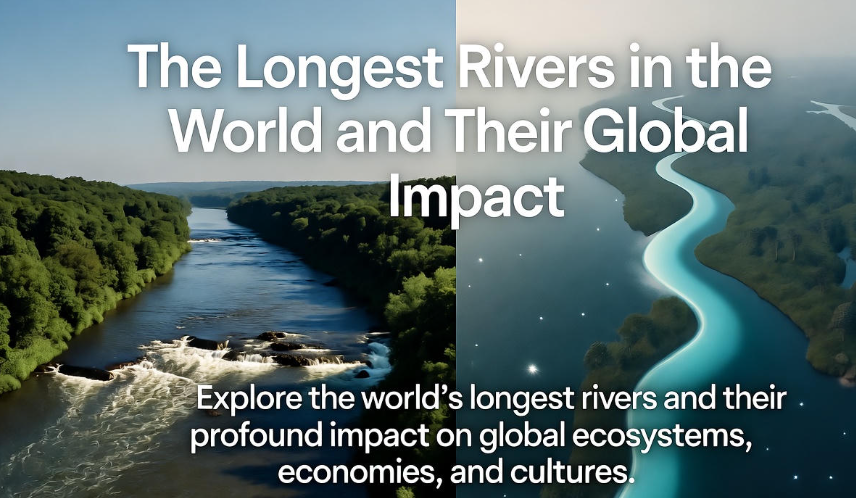When you look at the ocean, it may seem calm and still on the surface. But underneath, there’s a powerful and invisible movement constantly happening — ocean currents. These are like giant rivers flowing inside the sea, moving warm and cold water around the planet. They shape our climate, support marine life, and even affect the weather you feel every day.
So, let’s dive deep (pun intended ) into how ocean currents actually work — and why they’re so important for our planet.
What exactly are ocean currents?
Ocean currents are continuous movements of seawater that travel across the ocean basins. They can be slow or fast, deep or shallow. Some are warm currents, like the Gulf Stream in the Atlantic Ocean, while others are cold currents, such as the California Current.
You can think of them like conveyor belts — constantly moving water, nutrients, and heat around the world’s oceans.
| Type of Current | Temperature | Example | Region |
|---|---|---|---|
| Warm Current | Warm water from the equator moves toward the poles | Gulf Stream | North Atlantic |
| Cold Current ❄️ | Cold water from the poles moves toward the equator | California Current | Pacific Coast of North America |
| Deep Current | Cold, dense water moving along the ocean floor | Antarctic Bottom Current | Global |
| Surface Current ☀️ | Upper layer movement caused by wind | North Equatorial Current | Tropical Oceans |
Why do ocean currents happen?
There isn’t just one reason — it’s a mix of several natural forces working together. Here’s what mainly drives them:
-
Wind:
The wind is the most obvious player. When it blows over the ocean, it pushes the water’s surface, starting motion. Over time, this movement turns into a steady current. -
Earth’s Rotation (Coriolis Effect):
The Earth rotates from west to east. Because of that, moving water gets deflected — to the right in the Northern Hemisphere and to the left in the Southern Hemisphere. This twist is what gives currents their spiral-like patterns. -
Temperature Differences:
Warm water is lighter than cold water. So, when water near the equator heats up, it rises, while colder water from the poles sinks. This creates a vertical movement known as thermohaline circulation (we’ll talk about that soon). -
Salinity (Salt Levels):
Higher salt content makes water heavier. So, salty water sinks while fresher water stays on top. These density differences also help move water around. -
Ocean Floor Shape:
The shape of the sea floor — with mountains, ridges, and valleys — changes the path of currents. It’s like how rocks in a river make water flow in new directions.
Surface currents vs deep ocean currents
Ocean currents can be divided into two main categories — surface currents and deep currents.
| Feature | Surface Currents | Deep Ocean Currents |
|---|---|---|
| Depth | Upper 400 meters | Below 400 meters |
| Cause | Mainly wind and Earth’s rotation | Density (temperature + salinity) |
| Speed | Faster | Slower |
| Temperature | Usually warmer | Very cold |
| Example | Gulf Stream | Antarctic Bottom Water |
Most of what we see or feel on the ocean surface — like waves or drifting objects — is affected by surface currents. But deep ocean currents are quieter and much slower, forming part of a huge global circulation system that takes hundreds of years to complete one full loop!
Thermohaline circulation — the global conveyor belt
Now, here’s where things get really fascinating. Deep in the ocean, there’s something scientists call the “global conveyor belt” — a worldwide circulation pattern that links all the oceans together.
“Thermohaline” comes from thermo (temperature) and haline (salinity). It’s basically the process where differences in heat and salt levels make water sink or rise.
Here’s how it works, step by step:
-
In the North Atlantic, cold winds cool the surface water.
-
This cold water becomes denser and sinks deep into the ocean.
-
It then flows slowly toward the equator and into other oceans.
-
As it travels, it mixes with warmer waters, eventually rising again to the surface.
-
The cycle continues — redistributing heat all around the planet.
This system helps regulate Earth’s temperature. Without it, some regions would freeze while others would become unbearably hot. So yes, the ocean keeps our planet balanced — literally!
The role of major ocean currents around the world
Each ocean has its own unique set of currents that form a pattern known as gyres — large circular systems of moving water.
| Ocean | Major Currents | Description |
|---|---|---|
| Atlantic Ocean | Gulf Stream, North Atlantic Drift, Canary Current | Transfers warm water northward; influences Europe’s mild climate |
| Pacific Ocean | Kuroshio Current, California Current | Moves warm water toward Japan; brings cool water along the US coast |
| Indian Ocean | Agulhas Current, West Australian Current | Warm current off Africa; cool current near Australia |
| Southern Ocean | Antarctic Circumpolar Current | The world’s largest current — circles Antarctica |
| Arctic Ocean | Beaufort Gyre | Cold circular current trapped by sea ice |
These massive systems don’t just move water. They move life, nutrients, and energy too. That’s why areas where warm and cold currents meet (like off Japan or the west coast of South America) are often rich fishing zones .
How ocean currents affect climate
Ocean currents act like the Earth’s heating and cooling system.
-
Warm currents (like the Gulf Stream) bring heat from the tropics to higher latitudes. This is why Western Europe has a milder climate even though it’s at a high latitude.
-
Cold currents (like the Peru or California Current) bring cooler air to coastal areas, leading to fog and less rainfall.
A quick comparison:
| Region | Current | Climate Effect |
|---|---|---|
| Western Europe | Gulf Stream (warm) | Mild winters, more rainfall |
| West Coast of South America | Peru Current (cold) | Cool, dry coastal climate |
| East Asia | Kuroshio Current (warm) | Humid and warmer coasts |
| West Africa | Canary Current (cold) | Arid and desert-like coastline |
So basically, without ocean currents, the world’s weather would be completely different. Some deserts wouldn’t exist, and some cold regions would freeze beyond survival.
Impact on marine life and ecosystems
Currents do more than move water — they move life.
-
Nutrient transport: Deep currents bring up nutrients from the ocean floor, feeding plankton (tiny organisms that form the base of the food chain).
-
Migration paths: Many sea animals, like turtles and fish, follow ocean currents during migration.
-
Coral reef health: Currents regulate temperature and salinity — crucial for sensitive coral ecosystems.
For example, the upwelling zones along the coast of Peru and California bring nutrient-rich water to the surface, creating some of the world’s best fishing grounds.
How scientists study ocean currents
You might be wondering — how do we even measure something that happens deep in the sea?
Scientists use a mix of tools and technology:
-
Satellites: They track the movement of the sea surface and temperature changes.
-
Drifters: Floating devices that send GPS data as they move with the water.
-
Argo Floats: These are small, robotic floats that dive up and down in the ocean, measuring temperature and salinity.
-
Sonar and Dye Tracing: Sometimes, colored dyes or sound waves are used to trace how water moves in specific regions.
These tools help scientists predict weather, understand climate change, and even warn about natural disasters like hurricanes or El Niño.
The connection between ocean currents and climate change
This part is quite serious. Ocean currents are changing — and that’s affecting the planet.
Global warming is causing ice to melt and changing the salinity (saltiness) of seawater. When this happens, the thermohaline circulation can slow down or shift. If it weakens too much, it could lead to massive climate disruptions.
For instance, if the North Atlantic Current slows, Europe could face colder winters, even as the rest of the world gets hotter. It sounds strange, but it’s true — climate systems are deeply interconnected.
Fun facts about ocean currents
-
The Gulf Stream moves about 150 times more water than all Earth’s rivers combined.
-
Some deep-water currents take 1,000 years to complete a single global loop.
-
Whales use ocean currents like “underwater highways” during migration.
-
The fastest current, the Agulhas Current, flows at up to 2 meters per second.
-
Currents even affect airplane routes — because they influence the air above the ocean.
Real-life example — The Great Pacific Garbage Patch
Here’s something many people don’t realize: currents can also trap waste.
In the Pacific Ocean, circulating currents form a gyre that collects floating plastic and debris. This massive patch of garbage is now twice the size of Texas.
It’s a clear example of how human activity interacts with natural systems. The same currents that carry life can also carry pollution if we’re not careful.

How to visualize ocean currents (simple experiment)
Here’s a fun way to see the effect of temperature on water movement:
You’ll need:
-
A clear bowl of cold water
-
A small cup of warm water with food coloring
-
A spoon
Steps:
-
Slowly pour the colored warm water into one side of the bowl.
-
Watch as it rises and spreads — while the cold water sinks.
-
That’s thermohaline circulation in miniature!
This simple experiment shows how temperature differences drive movement — just like in the real ocean.
The future of ocean currents
Scientists are still learning how global warming, pollution, and melting ice might reshape the ocean’s flow. Some models suggest that major currents could shift within this century, leading to changes in weather, rainfall, and marine life distribution.
Protecting our oceans means protecting the balance that keeps Earth livable. It’s not just about saving fish — it’s about saving the invisible forces that make our world work.
Quick summary table
| Key Factor | Description | Impact |
|---|---|---|
| Wind | Pushes surface water | Creates surface currents |
| Earth’s Rotation | Causes deflection | Forms circular gyres |
| Temperature | Warm water rises, cold sinks | Drives vertical movement |
| Salinity | Changes density | Affects deep circulation |
| Climate Change | Alters temperature/salinity | Can disrupt circulation |
FAQs (Frequently Asked Questions)
Q1. What are ocean currents made of?
They’re made of moving seawater — driven by wind, temperature, and density differences.
Q2. Are ocean currents the same as tides?
No, tides are caused by the moon’s gravity and happen twice a day. Currents are continuous and last for months or years.
Q3. Which is the largest ocean current in the world?
The Antarctic Circumpolar Current — it circles Antarctica and moves more water than any other current.
Q4. How do ocean currents affect humans?
They influence weather, shipping routes, and even fishing industries. Without them, global trade and climate would look completely different.
Q5. Can ocean currents stop completely?
Not completely, but they can slow down or change direction due to climate change, which could seriously disrupt global weather patterns.
Final thoughts
Ocean currents are like the Earth’s heartbeat — steady, powerful, and vital.
They connect distant parts of the planet, shape our climate, and sustain countless forms of life. Even though we can’t always see them, their impact is everywhere — in the rain that falls, the food we eat, and the air we breathe.




